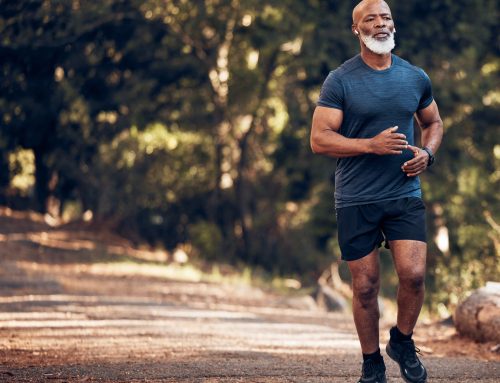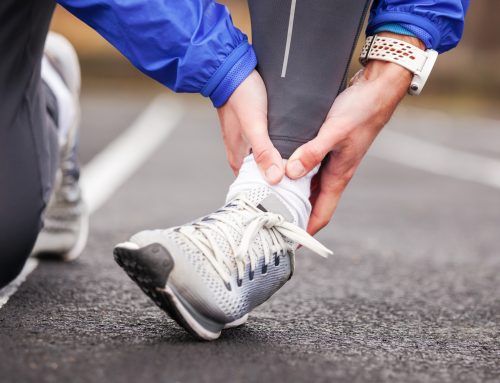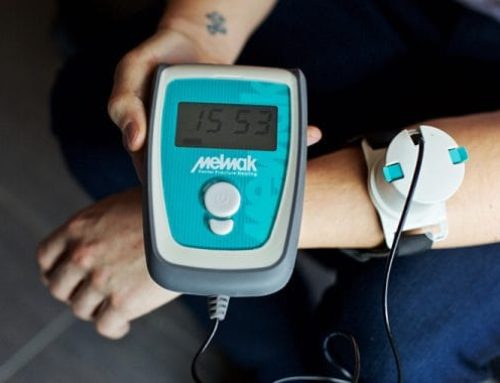Hitting the road for a run is good for the heart, lungs, muscles, bones, and brain. It’s been shown to boost the immune system, help with weight loss, lower cholesterol levels, reduce stress, and improve mood and depression.
This high-impact activity has a great risk of injury though and may be difficult for people with knee issues. But does running on a road versus other terrains make someone more susceptible to injury? And can it give you bad knees?

Running has a high risk of injuries, especially to the knees
Running marathons continues to increase in popularity, but yearly incidence rates for injuries are reported to be as high as 90 percent for people training to run one.
Research in the journal of Sports Medicine found that knee injuries are the most common injuries sustained by marathon runners. The most typical knee injury is called patellofemoral pain syndrome, also known as “runner’s knee”. This pain happens at the front of the knee and occurs when nerves sense pain in the soft tissues and bone around the kneecap. Injuries sustained in marathons in Taiwan also showed up in 28 percent of cases in the knees, the number one area of injury.
The repetitive impact forces of long-distance running can reach a magnitude of the impact of two to three times the runner’s body weight. This intense pressure on the body is a major cause of overuse injuries like stress fractures.
Running on natural grass shown to reduce pressure on the body
There has been much discussion lately about running on different terrains. Trail running has become more popular, as have other alternatives to running on a road, such as running on sand or barefoot. But does running on different surfaces impact the body differently?
There is little current research looking at the effects of different terrains on knee health, though there are studies looking at feet and leg pressures and injuries. Much of the research suggests that running on grass, wood chip trails, or a treadmill can be safer than running on concrete.
Current research suggests that running on natural grass reduces the stress on the musculoskeletal system. A study published in Research in Sports Medicine found that running on natural grass puts less pressure on the feet than running on concrete. Another study also found that running on grass provokes lighter loads on the rearfoot and forefoot.
Trail running may be beneficial. Running on a wood chip trail could reduce the risk of injury of the tibia, or shinbone, compared to concrete and synthetic running track, found a study in Sports Biomechanics.
A study in the Journal of Sport and Health Science found that peak pressure for the foot and heel was lower while running on a treadmill, but there were no significant differences from running on other surfaces, including concrete, grass, and synthetic track.
Running and the risk of developing osteoarthritis
Do you worry about running for fear of injuring your knees or developing arthritis? Our knees are one of the largest joints in our body and are also one of the most complex. Though they are prone to injury, running may decrease the risk of osteoporosis.
It’s been found that running in itself doesn’t seem to lead to osteoarthritis in the hips and knees, as long as you’re not pushing it too far. Researchers have found that recreational runners had a lower occurrence of osteoarthritis compared with controls who didn’t run and people who did competitive running. This suggests that a sedentary lifestyle or, at the other extreme, high intensity running over a long period of time can be associated with developing osteoarthritis.
Among healthy older adults, long-distance running has been found to not be associated with accelerated osteoarthritis. For people over 50 years old, running has been associated with less knee pain and shouldn’t be discouraged in people with knee osteoarthritis.
Reducing the risk of injury to your knees
While running can be beneficial for many individuals, everyone is still at risk of injury when they hit the trail or road. If you sustain any injury while running, it’s incredibly important to be fully recovered before hitting the road again.
Ensure you are also keeping in top shape to prevent injuries. Ways to prevent knee injuries include:
- Maintain knee strength: Do exercises like lunges, wall squats, calf raises, among others to strengthen the muscles and bones in the knee.
- Don’t run through pain: Stop running if you experience sharp pains in one or both knees. Visit your doctor or physiotherapist if pains continue.
- Take a break: Ensure you incorporate rest days in your exercise regime in order to allow your body to recover, rebuild, and prevent injuries.
- Warm-up before running: Warming up your body first dilates blood vessels which helps your muscles receive enough oxygen. It slowly raises the temperature of your muscles and raises your heart rate, which puts less stress on the body when running. Warm-ups can include walking, marching, lunges, or jumping jacks.
- Stretch: Only stretch when your muscles are warmed up. Don’t hold your breath or stretch to the point of pain. Good running stretches include the hamstrings, quads, calves, hips, abs and more.
- Ensure your gear is properly supporting you: Visiting a store that specializes in running or a physiotherapist will allow you to speak to professionals about your needs. They can check how your feet hit the ground and recommend the best solutions.
- Eat lots of nutritious food: Ensuring that your diet is well-rounded and includes proteins, calcium, and vitamin D will help strengthen your knees and help with recovery from injury.
- Maintain a healthy weight: People that are overweight or underweight are more likely to sustain injuries when doing high-impact activities like running on a street.
- Increase intensity and length of runs gradually: Going too fast and too hard is a recipe for injury. Take it slow and start off at a long intensity and gradually increase.
Are you a runner? Have you had issues with your knees or osteoarthritis?
How do you protect your knees? We’d like to hear more about your experiences. Please post your questions and comments below.





